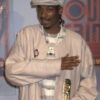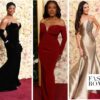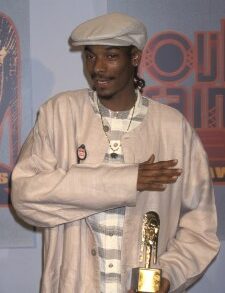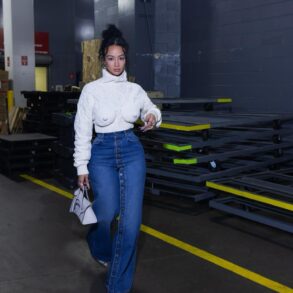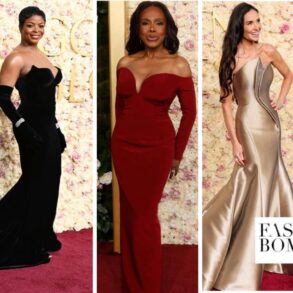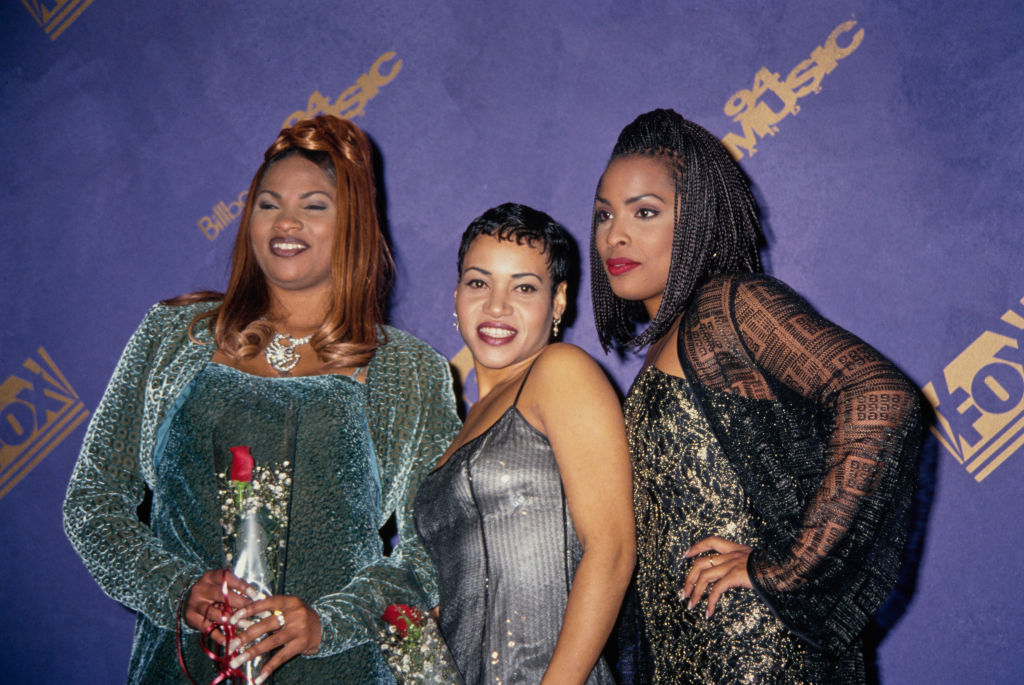
Source: Vinnie Zuffante / Getty
The history of hip-hop and fashion are inextricably linked, and unsurprisingly, Black women are at the center. From the East Coast to the West and down to the dirty South, Black women have used fashion as a form of individual expression and as a method to shun respectability politics for decades. Long before characters on popular TV shows wore bamboo earrings, lengthy fingernails, and box braids, young Black girls from disenfranchised communities across the country declared this stylish subversion of class norms was fashion; the approval of white America did not bind their creativity, nor define Black artistic expressions. Looking back at the regional hip-hop fashion trends of the ’90s and 2000s is an avenue to explore and elevate Black women’s ingenuity, resistance, and brilliance. The unmatched style of Black women has always varied depending where they call home, but the genius-level artistic expressions through fashion are the thread that stitches our culture together across the states.
MUST SEE: 2023 Melanin Beauty Awards
HIP HOP FASHION IN NEW YORK IN THE 70s – The Love of Fashion Helps Birth a Genre
The love affair between Black girls and fashion is largely responsible for the existence of hip-hop. In fact, the music genre and cultural phenomenon may never have existed if not for a Black teenage girl looking for the right outfit. In the summer of 1973, a sixteen-year-old Black girl named Cindy Campbell began a familiar ritual—pursuing the stores for the perfect back-to-school wardrobe. “I was saving my money because what you want to do for back-to-school is go down to Delancey Street instead of going to Fordham Road because you can get the newest things that a lot of people don’t have,” Campbell told Jeff Chang in an interview for his book, Can’t Stop Won’t Stop. “And when you go back to school, you want to go with things that nobody has so you could look nice and fresh.”
Like many residents of the South Bronx during that era, Cindy’s financial resources were limited. So, in true Black girl style, she found an innovative way to bring her dream of the perfect outfit into reality. Cindy threw a house party and charged each attendee $25.00. Her older brother, DJ Kool Herc, was a popular local DJ, a fact she used to promote the party. “A DJ KOOL HERC PARTY: Back To School Jam,” she wrote on the index cards used to draw a crowd. The party was held on August 11, 1979, and many historians have noted that this was the party where hip-hop was born. One of the most popular music genres in the world was birthed in the Bronx thanks in part to a stylish young Black girl.
Fifty years later, the powerful trifecta of hip-hop, fashion, and Black women is still going strong.
NEW JERSEY IN THE 90s: Bringing Sexy Back
By the mid-90s, hip-hop was no longer new, and beauty trends that challenged social norms and exemplified Black women standing in our power were on full display—most notably when it came to defining what it means to be “sexy.” New Jersey-born rapper Heather B. was a member of the famous Bronx group Boogie Down Productions in 1995. The beautiful emcee held her own lyrically with the guys in hip-hop while dressing in classic New Jersey/ New York hip-hop attire baggy jeans, timberland boots, and oversized shirts. Look at any of her videos and it’s clear that she didn’t conform to gender norms around what women should or shouldn’t wear. HelloBeautiful spoke to Heather about the trends of this region as the historic birthplace of hip-hop, her unique personal style and brands she gravitated towards. “In my opinion, that was the time when we first started to not care what were male or female brands,” she told HB, “We all mixed [and] matched. Lumberjack shirts, flight jackets, construction Timbs, etc.” Now, if you’re a true hip-hop head, when you read the line lumberjack shirts, your mind immediately goes to this lyric from NotoriousB.I.G. hit song Juicy when he rapped, “way back when I had the red and black lumberjack with the hat to match.” Lumberjack shirts were a hip-hop fashion staple, but this trend didn’t just belong to the guys. Heather, like many Black women from this region, loved to rock men’s fashion and turn it into their own. In fact, when we asked what the lyrical emcee would have typically worn to a NYC nightclub during this time, Heather responded, “Baggy Jeans, hoodie, bubble goose, Nikes [or], Timbs.”
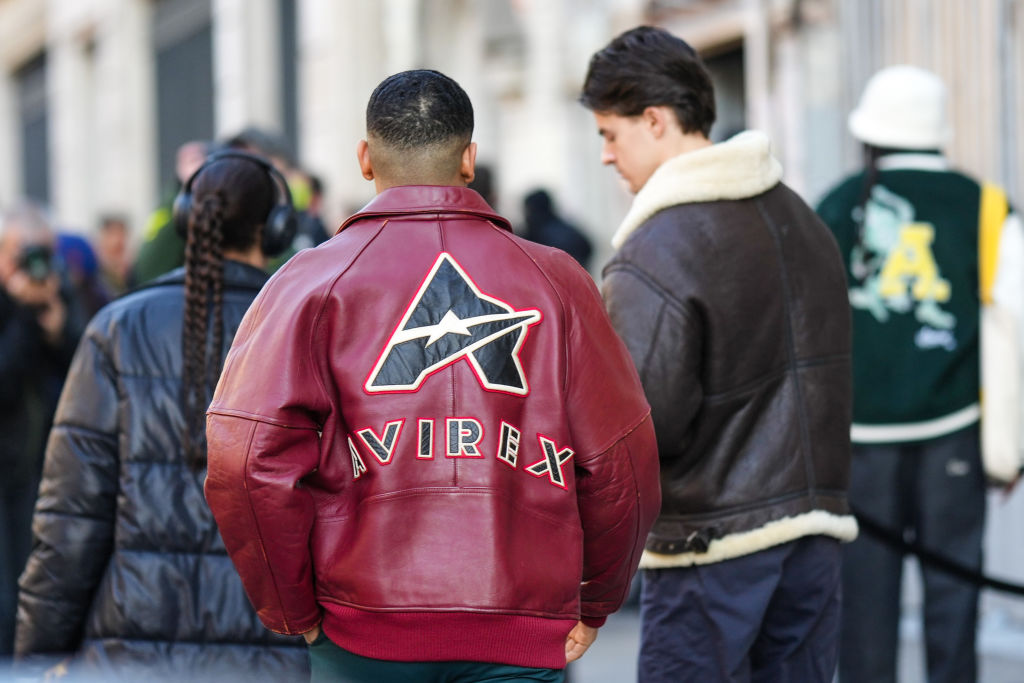
Source: Edward Berthelot / Getty
Were you really from Jersey or New York if you didn’t own a pair of these famous Timberland construction boots in the 90s? Black women’s shoe game is consistently on point; the only thing that will change is the type of shoes or sneakers we rock. In the late 90s in the New York/ New Jersey region, if you were “a sneaker head” like Heather, your collection undoubtedly included a pair of “54’11s,” called such in New York because, at the time, the total price of the sneaker was $54.11 including tax. This sneaker was perfect because it came in so many colors, and in the mid-90s, it was all about the pop of color, especially for women. Even though many Black women from communities in New York and Jersey rocked baggy Levi jeans, Avirex jackets, and lumberjack shirts, the jewelry always took the look to another level. For Heather, this included a name ring and hoop earrings. The right earrings were a must. Ask most Black women of a certain age about their favorite style in the ’90s; it’s likely they will say, “Bamboo earrings, at least two pairs.” This was certainly true for New York and New Jersey ladies.
CALIFORNIA IN THE 90s: Taking Up Space
While the East Coast was where hip-hop fashion expanded, such innovation and style couldn’t stay confined to one time zone.
In 1993, a then 21-year-old Mary J. Blige appeared on YO MTV raps performing her new song that would become a hip-hop classic, “What’s the 411?” with New Rochelle native rapper Grand Puba. At a time when a significant number of artists were rocking white-owned labels like Polo Ralph Lauren, and Tommy Hilfiger, Blige walking onto the MTV set and going toe-to-toe with Grand Puba over the Sean Combs-produced track was a standout moment in hip-hop fashion. The songstress donned a baggy blue denim jacket over a bright yellow shirt with matching oversized jeans, complete with a Cross Colours bucket hat (because what are the 90s without a bucket hat?). The performance would go down as one of the most memorable moments in hip-hop history, and it stands out in our collective memory thanks in part to a look created by two Los Angeles natives who were bringing a West Coast flair to the hip-hop world.

Source: Raymond Boyd / Getty
In the early 90s, Carl Jones and Thomas T.J. Walker launched their iconic brand–Cross Colours: Clothing Without Prejudice. Walker stated the “idea behind Cross Colours was to unify the African American community at a time when people were divided by gangs, drugs, and police mistrust.”
The brand exploded in popularity against the backdrop of the AIDS epidemic and start of the war on drugs—which data indicates disproportionately impacted Black and Brown people. The juxtaposition between Cross Colours’ signature bright apparel and the dark political climate in which the brand grew feels symbolic of the very existence of Black women in America—growing and shining in an atmosphere where failure should have been imminent. Yet, despite the turmoil and conflict, the brand emerged as one of the most iconic hip-hop clothing lines of the 90s. Some of the signature pieces included a shirt worn by Rozanda “Chilli” Thomas of TLC with the words “educated to elevate” written across the chest.
Blige wasn’t the only East Coast girl picking up California style. While the Yonkers native was etching Jones and Walker into the pantheon of hip-hop fashion designers, a fictional character from a movie set in California was inspiring the style of a young girl named Aliya King Niel who would grow up to become one of hip-hop’s most respected journalists. In 1995, the hood classic, Friday, hit theaters and featured a character named” Joi,” played by Paula J. Parker. “Joi” appears on screen and throughout the film sporting skinny, blond butt-length box braids, long red nails, bright red lipstick, and huge hoop earrings, which embodies the unique style the young Niel was looking for.
HB spoke to Niel about how the 90s film influenced her style.. “In 1995, we were not wearing blond butt-length braids or super long nails. I was also still trying to figure out my own personal style at the time. I had just graduated from college. I was teaching high school and wearing Ann Taylor Skirts,” Niel continued, “The first time I saw her was in 1995, and I knew that look was me, but I didn’t put it into practice until 2016. It’s a look I held in my mind for twenty years. When I finally got my first long, butt-length blonde braids, I said yes, this is it…this is me.”
“Joi’s” bold and brash West Coast style may not have been meant to be a fashion inspiration for Niel or any other young girl watching the film for that matter. Her character isn’t the girl the main character (played by West Coast rapper Ice Cube) ends up with. She is the loud girl his mother openly dislikes and is often the butt of the joke throughout the film. She’s the “ghetto girl” meant to contrast with the character “Debbie,” played by Nia Long, who wears a pixie cut absent of any color, subdued jewelry, and modest makeup. Ultimately, she was the girl chosen by the Ice Cube, the girl who is respected and valued in the movie.
Respectability politics has long stipulated that “good girls” who want to be “valued” and “chosen” by men and present as more palatable to white people should dress and behave more like a Debbie than a “Joi.” However, Neil, a former hip-hop journalist heavyweight turned book publisher, understood that fashion was an avenue to show her style and a way to freely express herself, respectability politics be damned. “Joi” helped her boldly enter any room she walked into, precisely the kind of influence she sought. “My mom wasn’t afraid to walk in a room and take up space. She wore a dashikis and a large ‘fro. I always knew I wanted to do the same thing as my mom and take up space, Joi helped me figure out what that was going to look like for me.”
THE SOUTH in the 2000’s: Bucking the Norm.
Black women win when we shun respectability politics and create our own rules of engagement, and few people understand this better than Southern Black women. Dr. Regina N. Bradley, author of the book Chronicling Stankonia: The Rise of The Hip-Hop South, offered insight into the distinct elements of the often overlooked Southern impact on hip-hop fashion in the 90s. As she tells HB, “Southerners took the every day and made it couture. We took the unique aspects of our day-to-day living and experiences and made them wearable. We made white tee shirts a thing. Our shoe game is unparalleled. We match our outfits with our cars. Come on, now.”
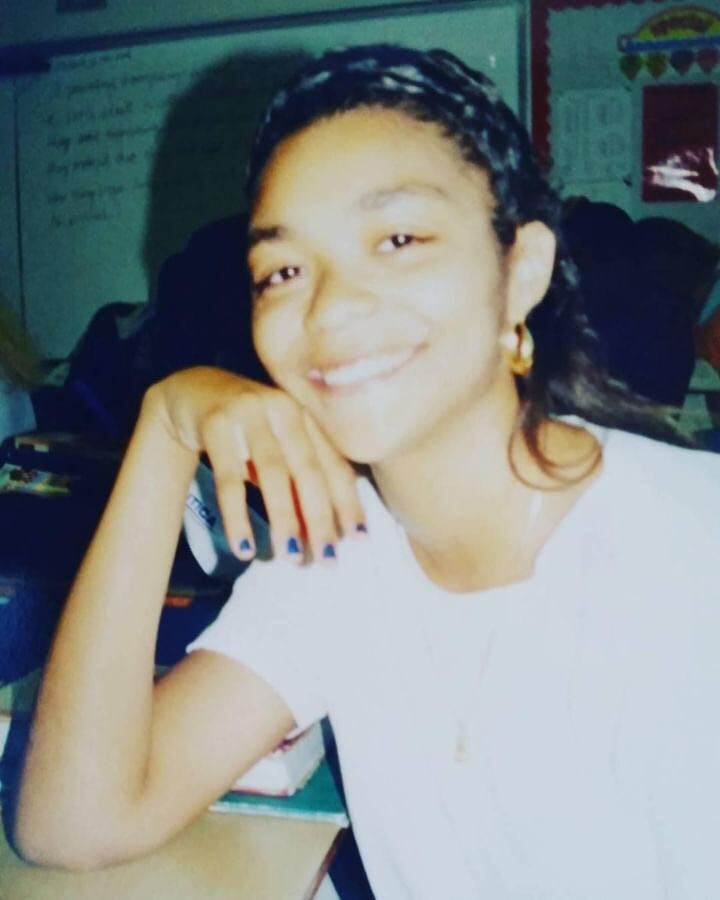
Source: Dr Regina N Bradley / Dr Regina N Bradley
Dr. Bradley took a trip down memory lane with us to unpack the unique looks typically worn when she was a teenager in 1999 and walked us through a typical trip at a mall in Albany, Georgia. “I would see the Saucony explosion and the race to secure a pair of the ice-blue gel bottom Reebok classics. I remember some folks wearing camouflage because of the No Limit influence. I also remember wanting and wearing jerseys, especially the Atlanta Braves white jersey – thanks 3 Stacks! – and the Blue UNC jersey dress that Mya wore in the ‘Best of Me’ video.”
Speaking of Mya, remember her slicked-back bun with the swooped bang in that same video? Dr. Bradley does. “You couldn’t tell me shit when I had pin curls and a swoop,” Dr. Bradely tells HB. “The ’90s and early 2000s were when Black hair magazines were the Bible. I [can still] smell and hear the sizzle of black gel and Pump It Up! I had long hair, so loose curls or crimps was a go to favorite for me and people wanting to play up in my hair when my curls fell into waves.”
Is it even possible to talk to Black women about fashion trends in the 90s and 2000s without the conversation circling back to hair? Black hairstyles and accessories were designed to help Black women and girls stand out from the rest, and these styles were prominent in the South. “I remember [the] hair trends – finger waves, pixie cuts, and French rolls when you wanted to be bougie. I also had a ridiculous collection of butterfly clips,” Dr. Bradley stated.
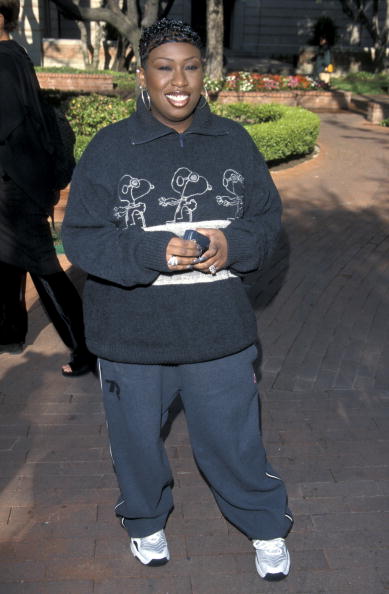
Source: Jim Smeal / Getty
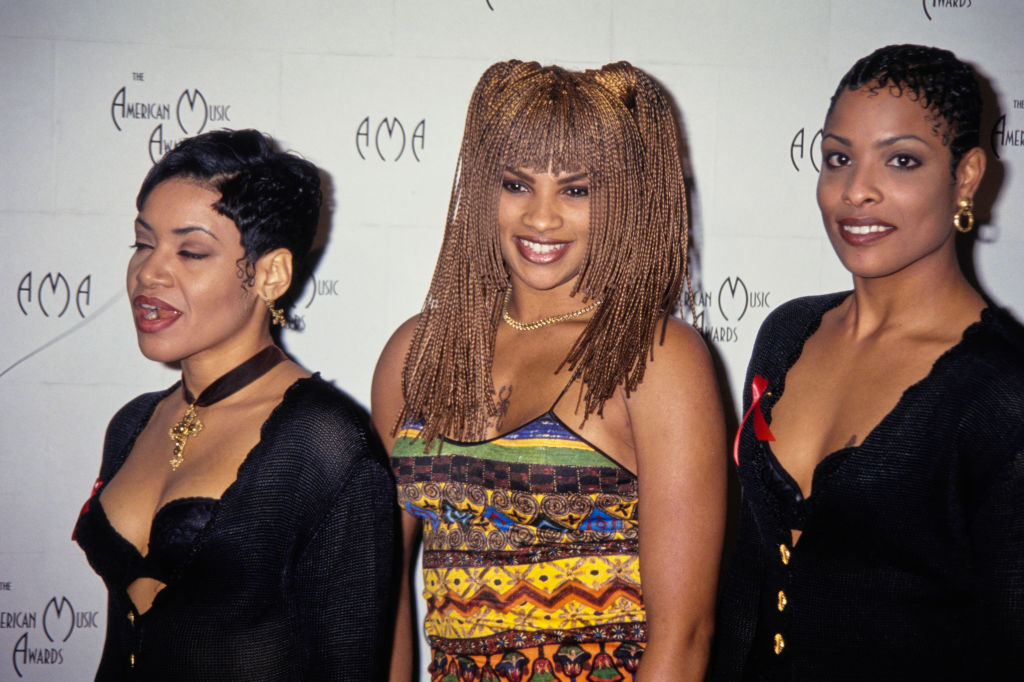
Source: Vinnie Zuffante / Getty
Many iconic Black hairstyles like braids, plaits, cornrows, and even headwraps gained popularity during slavery when many enslaved Black women in the South used these styling methods to protect their naturally curly and kinky locks. Our unique hairstyles were also used to communicate, as messages were hidden in cornrows to help those trying to escape. Unfortunately, like most elements connected to the core of who we are, Black women’s hair has not been spared from the ever-present attacks of white supremacy. Whether its Neil’s mom rocking an afro, blond “butt-length” braids, or the carefully laid finger waves complete with the black hair gel rocked by our sisters in the South, the discrimination and politicization around Black women’s hair is deeply woven into the fabric of this country. The 2023 CROWN Workplace Research Study concluded that “racial discrimination based on hairstyles can start as early as five years old—and last a lifetime.” This quantitative data is new, yet the effects of hair discrimination have been floating around our communities for generations. You can sit with any group of Black women and hear stories about being advised to straighten their hair before a job interview to increase the chances of making it to the next round. Or some of us being flat out told by employers that our hair was not “professional” enough. Thus, choosing to rock our hair in the way that makes us feel free is deeper than beauty trends—it’s also a conscious decision to stand in our power—European standards of beauty be damned.
From the brands we chose, the fit of our clothes, the hairstyles we wore, and all the way down to our tiniest accessories, fashion has always been a powerful vehicle to make a statement about how Black women want to be viewed in the world.
Innovative fashion is a universal thread that connects us all, and it’s part of our undeniable magic. It’s magic that includes us knowing how to turn adversity into triumph and modeling for each other what freedom through style could even look like. Like our sister Cindy, if funds are low, we figure it out and create something spectacular along the way. When we haven’t exactly figured out what it personally looks like for us to take up space in a room, we can count on another Black woman to show us the way. And when the world wants to put us in a box, we kick the lid off and fly simply by being fly. That’s the magic of Black women and the power of fashion.
DON’T MISS…
How Video Vixens Helped Set Beauty Standards In Hip-Hop
5 Hip-Hop Style And Beauty Icons From The 90s And 2000s
This post was originally published on this site be sure to check out more of their content.

